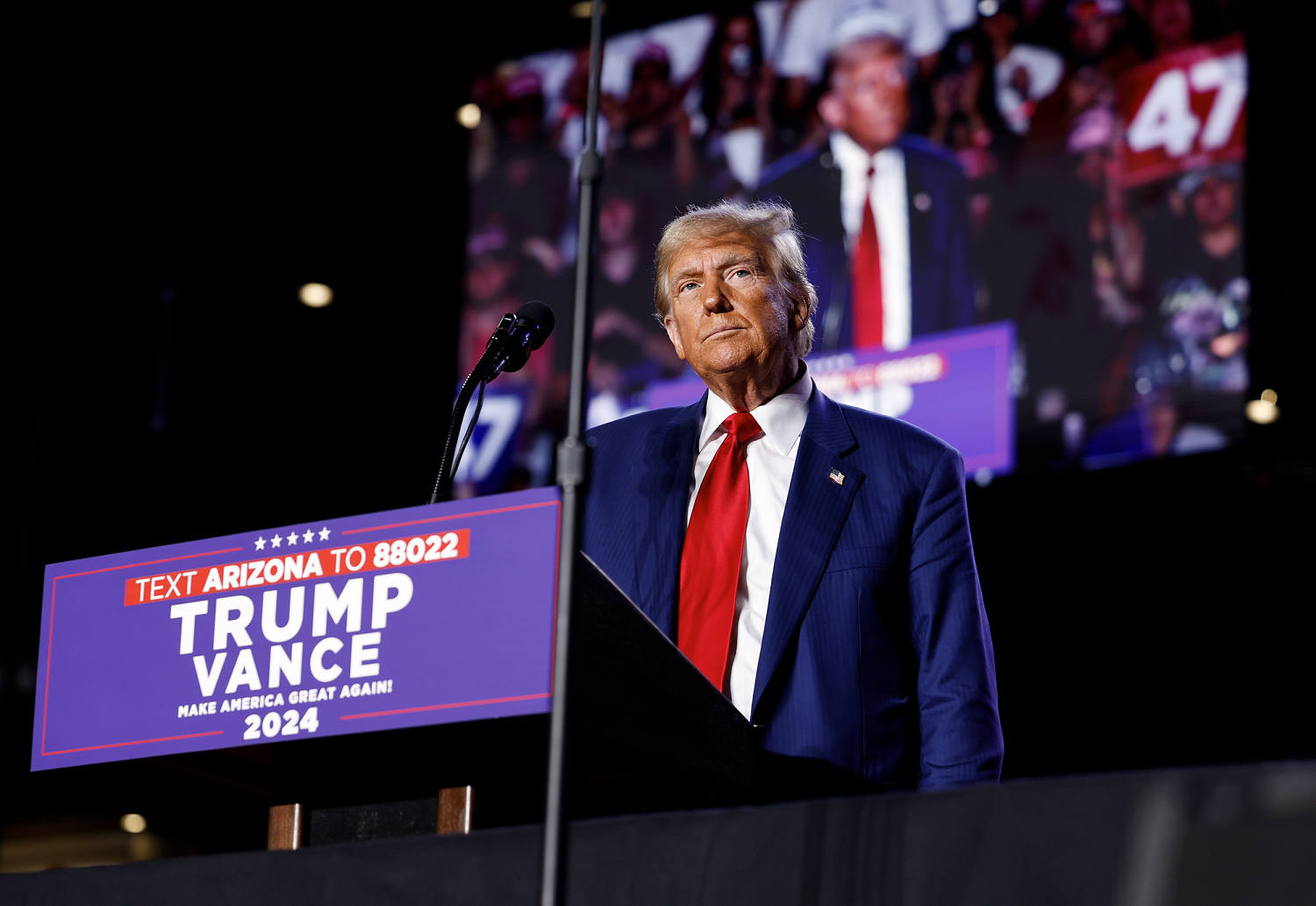
Voter frustration with their economic lives was central in propelling Donald Trump to a second term. Now, it will be up to Trump to try to change that trajectory and deliver on his sweeping promises of economic revival.
Trump will inherit an economy already on relatively solid footing. Inflation has slowed and wages have begun to catch up with higher prices. While companies aren’t hiring at the same breakneck pace as they were coming out of the pandemic, the job market remains strong by historic standards, with low unemployment and around one job opening for every person looking for work.
But despite the signs of strength in the economy, the cost of living and overall dissatisfaction with the economy was repeatedly cited as a top concern by voters heading into the election. Housing costs have been a major pressure point on household budgets after rents increased an average of 24% over the past four years, and, with mortgage rates over 6%, buying a home has been out of reach for many households. Food has been another rising expense, with the average cost of groceries up 22% over the past four years and food banks seeing record numbers of people seeking help.
Trump has floated a wide range of proposals that he says would improve America’s financial picture, many of which will require action from Congress, where Republicans will control the Senate and hope to control the House. Among Trump’s economic plans are deporting millions of immigrants, putting sweeping tariffs on all goods coming into the U.S., encouraging more oil production, lowering corporate taxes and eliminating taxes on social security income and tips.
Here are the ways some of those proposals could play out on the economy:
Tariffs
While inflation has been a top issue for voters, one of Trump’s central campaign promises — placing tariffs on all goods imported into the U.S. — would likely raise prices and cost workers their jobs, according to economists, business groups and even some Trump allies. Trump has rejected those assertions.
“To me, the most beautiful word in the dictionary is ‘tariff,’” Trump said during remarks at the Chicago Economic Club. “It’s my favorite word. It needs a public relations firm.”
Under Trump’s proposal, the U.S would impose a tariff of at least 10% on all goods coming into the U.S. from overseas and a 60% tariff on products being imported from China. Tariffs are paid to the federal government by the company importing those goods, like a retailer or manufacturer. Those companies can either pass the costs along to consumers by raising prices or absorb the costs and take a smaller profit.
If past tariffs are any indication, consumers will likely see higher prices. Not only do companies often pass along the increase, but competitors who are not subject to the tariff often also raise prices. Companies including AutoZone and Black & Decker have already warned investors that they will be raising prices if Trump carries through on his tariff proposal. Tariffs enacted by Trump in 2018 and 2019 led to higher prices for a range of goods, including washing machines, handbags and tires, according to a study by the National Bureau of Economic Research.
In the shoe industry, consumers and retailers were hit with a 7.5% tariff that Trump put in place in 2019 on hundreds of millions of shoes imported from China. While some retailers absorbed the cost of those tariffs and took a hit to their bottom line, others passed the fee along to consumers by increasing the prices of their shoes, said Matt Priest, head of the Footwear Distributors and Retailers of America
“We can attest to the fact that if you charge us more to bring a product in, it’s going to cost more for the consumer to buy that product,” said Priest. “ It’s kind of Econ 101.”
Trump has argued that putting tariffs on goods from China would encourage companies to move their plants to the U.S., creating jobs and boosting sales for U.S. producers.
But multiple studies, including those of Trump’s past tariffs and previous rounds of tariffs under different administrations, found that increasing tariffs didn’t lead to a significant number of companies relocating to the U.S. nor did it create jobs for domestic producers. Rather, Trump’s 2018 tariffs on steel and aluminum led to a reduction in manufacturing employment because of higher costs for companies using steel and aluminum in their products, according to a study by the Federal Reserve Board.
For shoemakers, Trump’s 2019 tariffs didn’t translate into any companies moving production to the U.S. because of the high labor costs and lack of supply chain and materials stateside, said Priest. He said he doesn’t see another round of tariffs from Trump changing that calculus.
“Its higher labor costs, a lack of labor interest in making shoes, a lack of material and material suppliers here in the States,” said Priest of moving shoe production to the U.S. “You can make the duties 200% on the imports, and it still won’t happen. It’s just not price competitive.”
Inflation
Trump has promised to “defeat” inflation, though the rate at which prices are increasing has already returned to its historical norm of 2% to 3% over the past several months after peaking in 2022. But prices for many essentials still remain well above their pre-pandemic levels.
To lower housing costs, Trump has said he would allow homes to be built on federally protected land, something that could help increase the supply of homes in places like Nevada and Arizona. He’s also said he would cut regulations for builders, although many regulations for housing are set at the state and local levels. He’s said he would promote homeownership through tax incentives, but his campaign hasn’t been specific on what those incentives would be.
Trump has said he would lower costs overall by reducing energy prices by 50% during his first year in office, something industry experts have said is unlikely. To do this, Trump has said he would allow oil companies to drill in more places, like on federal land in Alaska, and remove barriers to speed production.
Oil producers are already pumping record levels of oil in the U.S. and are constrained in just how much they can drill by limits on labor and infrastructure. Companies are also disincentivized from flooding the market with too much oil because it would drive down the price, causing them to potentially lose money on each barrel they pump. Oil prices are also set by a global market where other countries, like Saudi Arabia or Russia, could cut back on production to drive up prices and maintain profitability.
Immigration
Trump has said he will carry out “the largest deportation in the history of our country” of undocumented immigrants, claiming it would help the economy by freeing up housing and opening up jobs for U.S. citizens.
Business groups have warned, though, that deporting millions of immigrants could create a labor shortage that would ultimately drive up prices, especially in areas like food production and housing where immigrants make up a significant share of the workforce.
In the construction industry, which is already facing a shortage of hundreds of thousands of workers, there are an estimated 1.5 million undocumented workers making up about 13% of the total workforce, according to data the Pew Research Center provided to NBC News.
The National Association of Home Builders CEO Jim Tobin told NBC News last month that a massive deportation of immigrants would be “detrimental to the construction industry and our labor supply and exacerbate our housing affordability problems.”
The NABH and other industry groups have said a key reason for higher housing costs over the past several years has been a mismatch between supply and demand after housing construction tumbled following the Great Recession. As home builders have been ramping up the construction of single-family homes and apartment buildings in recent years, they have faced higher costs of labor and materials, further adding to the price of homes.
Across the economy, an analysis by researchers at the University of New Hampshire found that a mass deportation of immigrants could reduce the U.S. economy, as measured by gross domestic product, by as much as 6.2%, or about $1.7 trillion in lost productivity.
Taxes
Trump has proposed a number of tax cuts, including a complete elimination of the federal income tax. But those plans have varying likelihoods of getting enacted, given that Congress would have to pass legislation to change the tax system. While some of the plans are thin on details and there are many variables for how his proposals would be enacted, economists at the University of Pennsylvania estimate Trump’s tax and spending plans would increase the deficit by $4.1 trillion when accounting for the effects they would have on the wider economy.
One of the most likely tax proposals to become a reality would be an extension of the tax cuts enacted during Trump’s first administration, which are set to expire in 2025. Those cuts lowered the corporate tax rate to 21% from 35%, reduced individual income tax rates, and increased the standard deduction.
Trump has suggested he would lower the corporate tax rate even more, to 15%.
One of Trump’s more consistent campaign pledges has been eliminating taxes on tips, which could affect about 2.5% of workers who receive tips as part of their income. But it could cause major disruptions in how workers are paid if more industries shifted to a tipping system where workers are paid a minimum wage and expected to get the bulk of their income tax-free from tips. Even white-collar industries could adopt a system where a portion of employees’ income is classified as tips.
That could create havoc for workers and consumers and reduce the amount of income taxes the federal government brings in.
Trump has also said that the income seniors receive from Social Security should be tax-free. About 40% of Social Security recipients pay federal income taxes, typically because they have other sources of income that raise them above a certain threshold where they are required to pay income tax, according to the Social Security Administration.
Eliminating a tax on social security would mean a loss of tax revenue for the federal government, which would then either add to the deficit or need to be offset by cuts.

